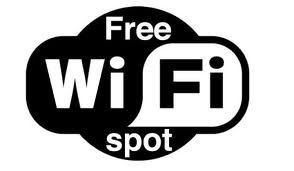Undoubtedly, the number of free public Wi-Fi hotspots has grown tremendously over the last few years. However, not every hotspot can afford you the protection that is synonymous with a private home network. Your smartphone, tablet, or notebook’s firewalls and default settings may not be adequate to protect you from prying eyes as you are up and about. Therefore, if you want to keep your files and information secure, it is vital that you know how to protect yourself while you are away from home. Below, we take a look at 6 essential tips on how to safely use public Wi-Fi hotspots as follows:
VPN
Arguably, the most secure way of browsing on a public network is through the use of a virtual private network (VPN). A VPN ensures that all your traffic is routed via a secure network even when you are browsing on public Wi-Fi, thus giving you private network perks whilst enjoying the freedom of public Wi-Fi.
Also, while there is an abundance of free VPN services, paid services guarantee connection integrity. For those who regularly connect to unknown networks, it is advisable to set up a VPN in order to safeguard your personal information.
Ensure sharing is turned off
While it is common to share your files, printers, or even allow remote logins from other computers that form part of your Wi-Fi network in the comfort of your home, unless you disable such settings prior to connecting to public Wi-Fi networks, anyone within range may be able to hack into your computer.
If you are using Windows, proceed to Network and Internet settings in the control panel and open the Homegroup section’s advanced sharing settings. From here, you will be able to toggle printer and file sharing in addition to network discovery which should leave your computer invisible to anyone connected to the same network. Alternatively, if you are using a Mac, go to system preferences followed by sharing and ensure none of the options are checked.
Avoid automatic connections
Your tablet or smartphone may be set to automatically connect to available Wi-Fi hotspots which may seriously endanger your privacy. Not only will your device be able to access public networks without your express permission, you may also end up connecting to malicious networks that may be purposely set up to gather your information.
Granted, most smartphones have this option disabled by default although it is not a rule of thumb and should always be double-checked. Begin by opening the Wi-Fi section of your phone’s settings and turn it off. Also, if you do not find this option, you should be safe.
Two-factor authentication
Two-factor authentication denotes the use of two pieces of information to access an account, one which you have and the other you know. More often than not, this takes the form of a code and password that are sent to your phone.
Most popular services and websites support two-factor authentication, which means that even if someone is able to access your password via public Wi-Fi, they will still not be able to log in.
HTTPS
Since regular websites transfer their content in plain text, it makes them an easy target for anyone with unauthorized access to your network connection. Consequently, many websites now use HTTPS to encrypt the transferred data. However, it is not prudent to rely on a web service or website to keep you protected.
You can independently create such an encrypted connection with the browser connection- HTTPS Everywhere. With this plugin enabled, all website connections should now be safely secured with HTTPS and you can rest easy that any data transfer is safe from scrutiny.
Network name confirmation
Hackers have been known to set up fake Wi-Fi networks in an attempt to attract unwitting public users. For instance, the McDonald’s public network may not be named “Free McDonald’s Wi-Fi”. However, if this is a fake network, connecting to it is likely to put your device into harms way. These types of networks are really common at airports or other large public areas.
Therefore, if you are unsure of whether you are connecting to the official network, always ask. If you are in a coffee shop or restaurant, employees should know the official network name and may even help you get connected. However, if there is no one around to ask, you may consider moving to a new location where you can be certain that the Wi-Fi network is genuine.
Know another public Wi-Fi safety tip? Let us know in the comments!


